Battleships type "Marat". Modernization of the main caliber
Main caliber What happened
The main armament of the battleships were 12 * 305-mm guns of the 1907 model, which had a barrel size 52 caliber and were placed in four three-gun turrets. The maximum elevation angle of these units was 25 degrees, and the maximum firing range of 470,9 kg. projectile, released with an initial speed 762 m / s, was 132 cable. The pass rate of fire was 1,8 rds / min, while the loading was performed in the range of elevation angles from -5 to + 15 degrees.
The frontal and side armor plates of the towers were 203 mm thick, the back side (for counterweight) 305 mm, the roof 76 mm. Barbety to the upper deck, and slightly lower 150 mm armor defended it, then - only 75 mm, though 1-th and 4-th towers had a bow and stern gain to 125 and 200 mm, respectively.
For 305-mm / 52 guns arr. 1907, the specialists of pre-revolutionary Russia created 3 of the type of military ammunition: armor-piercing, semi-armored and high-explosive. All of them were called 1911 g. Projectiles, had a mass of 470,9 kg, initial velocity 762 m / s, and firing range at an angle of elevation of 25 guns degrees. in 132 cable. They differed in length - 1 191, 1 530 and 1 491 mm, the content of explosive - 12,96, 61,5 and 58,8 kg, respectively. In this case, the armor-piercing projectile had a KTMB detonator, and a semi-armor-piercing and high-explosive projectile - MRD mod. 1913 g. There was also a practical ammunition with a mass of 470,9 kg, which was a steel bar, that is, did not contain any explosives or a detonator.
As for the fire control system, it was extremely confusing on battleships of the “Sevastopol” type. The ships had a 2 rangefinder with a base in 6 m, located on the fore and aft superstructures, which provided the work of two central posts, which, among other functions, also contained firing controls. The battleship towers did not complete the range finders.
But the fire control devices themselves (PUS) were a perfect “hodgepodge”, and the thing was this. Initially, the newest PUS developed by Erickson was supposed to be installed on the Sevastopol type battleships. This, by the way, does not mean that the order was “floated” abroad, because the development was carried out by the Russian branch of this company and the Russian specialists who worked in it. Alas, they did not do it in time, and by the time the Sevastopol was completed, the Erickson fire control system was not yet ready.
As a result, the battleships installed the good old system of the company "Geisler and K" arr. 1910 d. Unfortunately, for all its merits, it is still impossible to consider “Geisler and K” a full-fledged OMS, for several serious reasons:
1. The “Geisler and K” PUS did not independently develop an amendment to the angle of horizontal guidance, that is, the preemption for firing, and the viewfinder was not part of it at all.
2. PUS independently calculated the angle of vertical guidance, but as the data required for the calculation required the magnitude of the distance change (VIR) and the magnitude of the bearing change (VIP). That is, the officers controlling the artillery fire had to independently determine the parameters of the target and their own ship (course, speed, distance, bearing) and calculate the VIR and VIP manually.
However, due to the unavailability of the Erikson MSA, the fleet purchased the British Pollen instruments, which were an automatic calculation tool for VIR and VIP, that is, in essence, they eradicated the main drawback of the Heusler. The device Pollana successfully integrated with the "Geisler and K", and later the resulting MSA was supplemented with separate Erickson instruments. As a result, by 1917, all four Baltic battleships had a completely modern, by the standards of the First World War, centralized fire control system of the main caliber. In terms of its functionality, it appears to be somewhat losing to the British SLA and was approximately on par with the German ones, but the German ships exceeded the Sevastopoli in the number of range finders.
Modernization of tower installations
Strange as it may seem, but the volumes of modernization of the guns and towers of the Soviet battleships are not completely clear, since the sources have significant differences. It is reliably known that 305-mm / 52 guns of all battleships received lined barrels instead of fastened ones, which greatly simplified the procedure for their replacement. Also the volume of alterations of tower installations on the battleship "Paris Commune" is more or less clear.
Most of the three battleships of the “Paris Commune” towers carried out an increased elevation angle to 40 degrees, with the result that the range of the standard 470,9 kg projectile increased to 29 cables, that is, from 132 to 161 cable. The rate of fire also increased: for this, the towers were “transferred” to a fixed loading angle (+ 6 degrees), which made it possible to significantly increase the power of the vertical guidance, loading and feed drives. As a result, the rate of fire increased from passport 1,8 to 2,2 rpm. The price for this was an increase in the mass of the rotating part of the turret on 4 tons and the rejection of the reserve system of loading guns.
But with the towers of the Marat and the October Revolution, alas, there is no clarity. A.M. Vasiliev, in his works on the modernization of battleships, indicates:
But S.I. Titushkin and L.I. Amirkhanov, in his work The Main Caliber of Battleships, does not report any such upgrades to the Marat and the October Revolution, but, on the contrary, directly indicates that their rate of fire has remained the same. The author of this article can only assume that after all, S.I. Titushkin and L.I. Amirkhanov, since their work is more specialized in the field of artillery than the works of A.M. Vasiliev. Perhaps there was a confusion between what they wanted to do and what they really did. The fact is that S.I. Titushkin and L.I. Amirkhanov pointed out that such upgrades, with the rate of fire being brought to 3, were planned to be carried out at min / min for the towers of the battleship Frunze, when there were still plans to reorganize into a battle cruiser. I must say that the 2 towers of this battleship were later refitted along the lines of the Paris Commune, but this happened after the war, when they were installed on the concrete blocks of the No. XXUMX battery near Sevastopol.
Thus, the firing range of the "Marat" and the "October Revolution" remained the same for sure - 132 cable, and, apparently, the rate of fire remained the same, that is, at the level of 1,8 rpm.
The armor protection of the towers of all three battleships received a single reinforcement - the thickness of the tower roof was increased from 76 to 152 mm, otherwise the thickness of the armor remained the same.
As for fire control systems, everything is not completely obvious here either. Let's start with range finders: it is very important that the number of range finders that ensure the operation of the main caliber MSA has increased significantly, because all the towers of all three battleships received their own range finders. In this case, SI Titushkin and L.I. Amirkhanov claims that Italian OG rangefinders with 8 m base, developed by Galileo, were installed in the Marat towers, while the October Revolution towers also received 8-meter rangefinders, but of a different brand: DM-8 firms "Zeiss". Unfortunately, dear authors do not report anything about range finders installed in the battleship “Paris Commune” towers, although their presence is clearly visible in the photographs and drawings of the ship.
At the same time, A.V. Platonov in his "Encyclopedia of Surface Ships" gives completely different data: that the Tseiss rangefinders were installed on the Marat and the October Revolution, and the Paris Commune were installed on the Italian Marat. But at least the authors agree that all these rangefinders had a base of 8 meters.
However, of course, these rangefinders had auxiliary significance, because, firstly, they were at a relatively low altitude and their horizon was not too large. And secondly, they were used as an additional, clarifying tool for the equipment of command-ranging posts (KDP) installed on the battleships.
Absolutely all sources agree that two KDP-6 B-22s were installed at the October Revolution and the Paris Commune to service the main caliber, but there was no clarity on what was put on the Marat. Oddly enough, but S.I. Titushkin and L.I. Amirkhanov claims that this battleship received 2 KDP of the same modification, but this is an obvious misprint, because in all the photos of the battleship we see only one similar KDP.
At the same time, a number of authors, including A.V. Platonov, reported that the "Marat", although it received a KDP-6, but an earlier modification of the B-8. The main differences between the B-8 and the B-22 were the absence of the centering sight and the telescopic tubes of the post gunners. Accordingly, the weight of the KDP-6 B-8 was on 2,5 tons, and the calculation on the 2 of a person is less than that of the KDP-6 B-22.
But the most “funny” discrepancy in the sources is the number of range finders in one KDP-6, no matter what modification. S.I. Titushkin and L.I. Amirkhanov indicates that this KDP was staffed with two rangefinders with a DM-6 brand 6 meter base. But A.V. Platonov indicates the presence of only one such rangefinder. Who is right is difficult to say, because the author of this article is not an expert in fire control systems, and the study of photographs gives almost nothing. Some photos seem to indicate that there are two range finders, and not one.
But on the other hand, from the drawings it follows that the second "range finder" is not a range finder at all, but something shorter.
Nevertheless, only one KDP for the main caliber of the Marat was clearly not enough; therefore, almost all sources indicate that they were going to openly open one more rangefinder at the 8-meter base. Interestingly, A.V. Platonov in one of his monographs argued that this rangefinder was still installed on the aft superstructure, but the author could not find anywhere else a photo of the “Marat” that would confirm this statement. It must be said that the device of such dimensions is extremely noticeable, and its absence in the photo clearly indicates that the installation of this rangefinder has remained only an intention and has never been embodied "in the metal." However, in his later works A.V. Platonov no longer wrote about the presence of this rangefinder on the Marat.
As for the fire control devices, everything is much simpler. As regards the main caliber, the “Marat” remained exactly with what it had been installed during the First World War, that is, the “hodgepodge” of the Geisler and K devices, Erickson and Pollan. Thus, the battleship, of course, at the beginning of World War II had a central guidance system for the guns of the main caliber, but it was impossible to call it modern. Of course, in terms of their qualities, the Marat "MSA" lagged far behind the equipment installed on modern battleships of the world, but still it should not be considered completely incapacitated. As an example, the British light cruisers of the Linder type, which placed the SLA not even at the level of the 1 World War I, were worse, because it was deliberately simplified for the sake of economy: nevertheless, these English cruisers participated in many battle episodes and Reached quite acceptable shooting accuracy for their 152-mm guns.
The situation was somewhat better with the central guidance of the battleships October Revolution and the Paris Commune, because they received more advanced AKUR vehicles. What kind of appliances?
Since 1925, the so-called direct-control apparatus of the APKN was developed in the USSR, which was planned to be installed as an element of the LMS on all large ships, both of new construction (when it comes to that), and undergoing modernization. This device had to independently, in automatic mode, calculate the scope and rear sight, thereby completely freeing the artillery firing manager from working with tables and other manual work and calculations. The work was difficult and progressed slowly, so management fleet in 1928, insisted on the parallel acquisition of the British Vickers AKUR device and the simultaneous transmission of data from the firing machine and teams of the American company Sperry.
However, when the mentioned instrument sets were at our disposal, it turned out that they did not meet the expectations of our specialists. So, AKUR had a too large error in determining the course angle - 16 thousandths of a distance, and the transfer “Sperry” did not work at all. As a result, the following happened: the specialists of the Electropribor plant, engaged in the development of APKN, were forced to "retrain" for revision of the AKUR and the simultaneous transfer of Sperry - the work on the latter was all the more good because the similar Soviet product was in the final stage of development. In the end, the developers, using a number of APCN solutions, managed to achieve the required accuracy parameters from AKUR, put them into working condition and combine the Sperry synchronous transfer with it, and get a fully workable SLA at the output that is far superior to the combination of Heusler, Pollen and Erickson, who were equipped with dreadnoughts like "Sevastopol". Such AKUR received the "Paris Commune" and the "October Revolution."
Of course, AKUR was a great step forward in comparison with the MSA of the 1 World War I era, but by the beginning of the Great Patriotic War they were largely outdated. Work on the creation of the PUS in the USSR continued further: for the leaders of the Leningrad type, the Galileo shooting control devices were acquired, which possessed a number of possibilities not accessible to AKUR. So, for example, AKUR ensured firing of the main caliber by observing signs of falling, or the so-called “fork”, when the main artilleryman achieved a volley, made a flight and then undershoot, and then began to “half” the distance. But that was all, but PUS “Molniya” and “Molniya ATS”, developed on the basis of the Italian MSA, could use all three methods of controlling artillery fire known at that time. The method of observing the signs of incidence described above, and in addition, new PUS could use the method of measured deflections, when the KDP range finders measured the distance from the target ship to bursts from the drops of projectiles, and the method of measured distances, when the range finder determined the distance from the leading ship to the burst shells, and compared with the calculated data on the position of the target ship.
"Lightning" and "Lightning AC" were installed on the 26 and 26-bis cruisers, respectively, and, in general, we can say that the main caliber of the main caliber of the Kirov and Maxim Gorky-type cruisers was significantly superior in its effectiveness. installed on domestic battleships, not to mention the "Geisler" / Pollana / Erikson on the "Marat".
As for the ammunition for 305-mm guns, in the pre-war USSR, different types of ammunition were developed for the 305-mm guns, but only one was adopted.
The first "shell" direction was the creation of modified armor-piercing and high-explosive shells of an improved form. They were supposed to have the same mass as the shells arr. 1911, that is, 470,9 kg, but at the same time their range of fire should have increased by 15-17%, and armor penetration - improved, and the effect was to be the most replacement at distances over 75 cable. It is not entirely clear at what stage these works stopped: the fact is that they could fully realize their qualities only in the implements with which they planned to arm heavy cruisers of the Kronstadt type. The latter should have reported the initial speed of 470,9 kg to the 900 projectile, m / s, while the 305-mm / 52 gun obr. 1907, which armed Sevastopol type battleships - only 762 m / s. As you know, 305-mm artillery with such record-breaking characteristics before the war was never created; accordingly, one should not be surprised at the lack of ammunition for them. However, it cannot be excluded that the creation of new projectiles was stopped due to some other, structural or technological difficulties.
The second type of ammunition, the development of which looked simply extremely promising, became a “semi-armored projectile arr. 1915 of drawing No. 182. In fact, this projectile was not created in 1915, but in 1932, but experimented with it before 1937. It was a “super heavy” 305-mm ammunition, whose weight was 581,4 kg. Of course, such a projectile could only be fired with an initial speed reduced to 690-700 m / s, but due to better energy conservation, the firing range of this ammunition exceeded that of 470,9 kg shells by 3%.
However, the most ambitious "bonus" of the increased mass was extremely high armor penetration. If 470,9 kg, according to Soviet calculations (hereinafter, according to armor penetration, the data of SI Titushkin and LI Amirkhanova are given) punched 100 mm vertical armor cable on 207, then 581,4 kg projectile on 90 cable could pierce 330 mm armored plate.
Unfortunately, the “super heavy” projectile was never adopted: there were problems with accuracy of fire, besides, the ammunition turned out to be too long, and the designers could not ensure its longitudinal strength - it was often destroyed when overcoming armor barriers. In addition, the feeding and charging mechanisms of the Sevastopol type battleships were not designed to work with ammunition of such a mass.
As a result of all this work on the "superheavy" projectile were curtailed, which is a pity. Interestingly, the Americans, returning to the 305-mm caliber on the "big cruisers" of the "Alaska" type, used similar ammunition as the main one. Their guns fired 516,5 armor-piercing kilograms with projectiles with an initial velocity of 762 m / s, which is at a vertical angle in 45 hail. provided the firing range of the 193 cable and pierced the 323 mm armor at the 100 cable distance.
And finally, the third direction of improving ammunition for domestic 305-mm / 52 guns was the creation of a "high-explosive long-range projectile arr. 1928. This munition had a mass of only 314 kg, but due to this its initial speed reached 920 or 950 m / s (unfortunately, somewhere in SI Titushkin and LI Amirkhanova crept in a typo, as they give both values). The increase in firing range turned out to be enormous - if the upgraded Paris Commune tower installations were able to send a 470,9 kg projectile into the 161 cable course, then the lightweight 314-kilogram - on the 241 cable, that is, one and a half times further. Well, when shooting with an elevation angle of 25 grad., Which remained the limit for the battleships Marat and the October Revolution, the firing range increased from 132 to 186 cable.
At the same time, the explosive mass in the new projectile was almost as good as the conventional high explosive ordnance 470,9 kg, and was 55,2 kg versus 58,8 kg. The only parameter by which the lighter projectiles were inferior to conventional ammunition was the dispersion, which the 314 had kg of projectiles was quite large. But this deficiency was not considered critical, since the said shells were intended for the shelling of coastal area targets. “High-explosive long-range shells arr. 1928 g. "Were put into service in 1939 g., Becoming the only projectile of this caliber, created in the pre-war USSR.
With this, the author finishes the description of the main-caliber artillery of the upgraded battleships Marat, the October Revolution and the Paris Commune, and proceeds to the anti-mine caliber.
To be continued ...
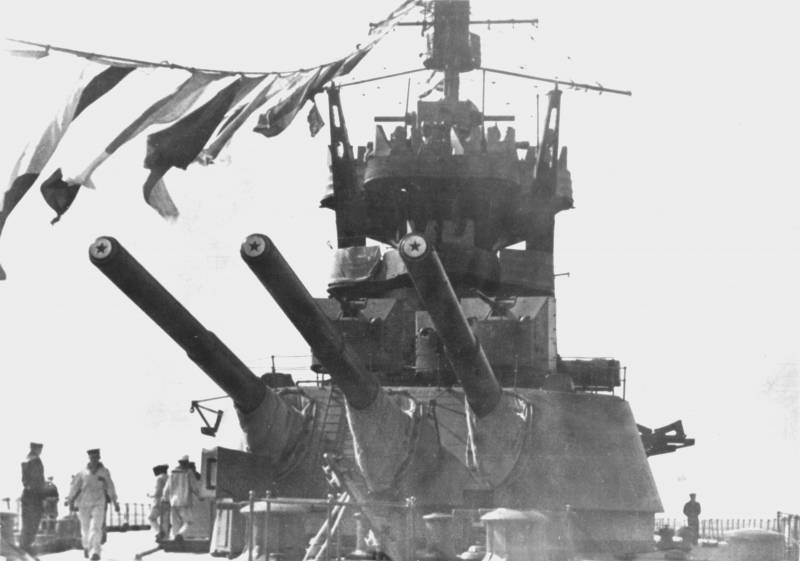
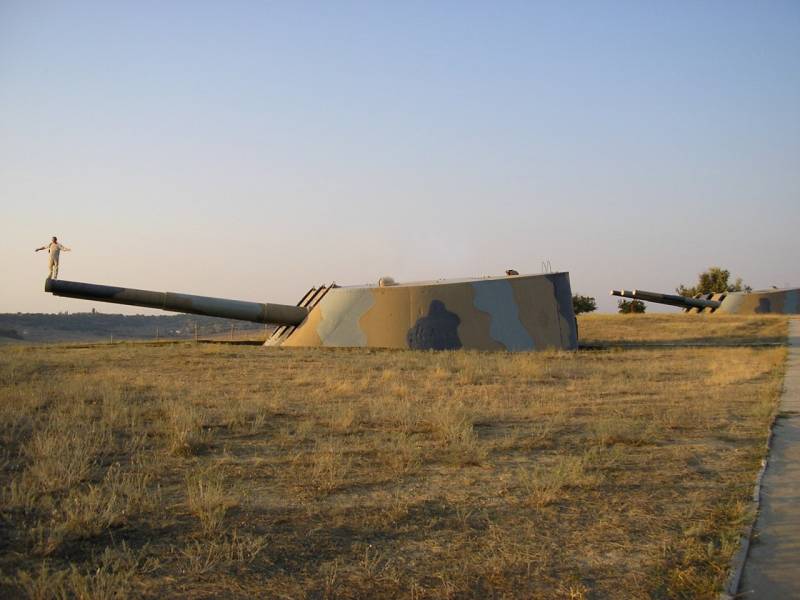
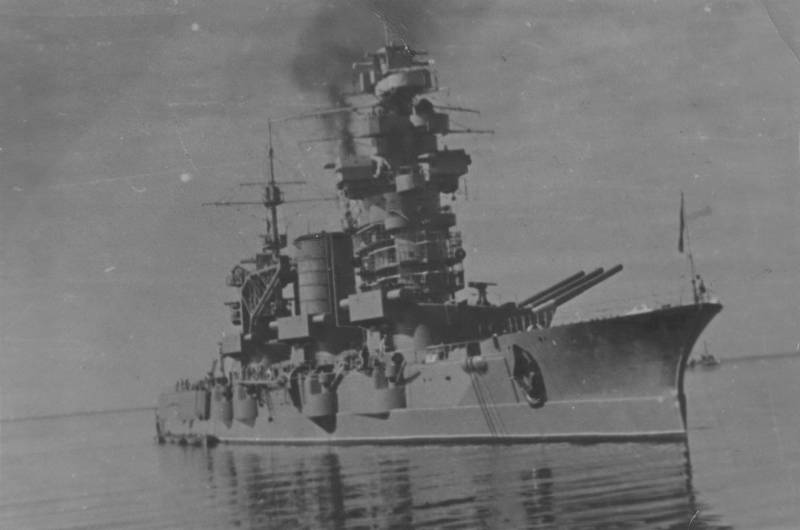
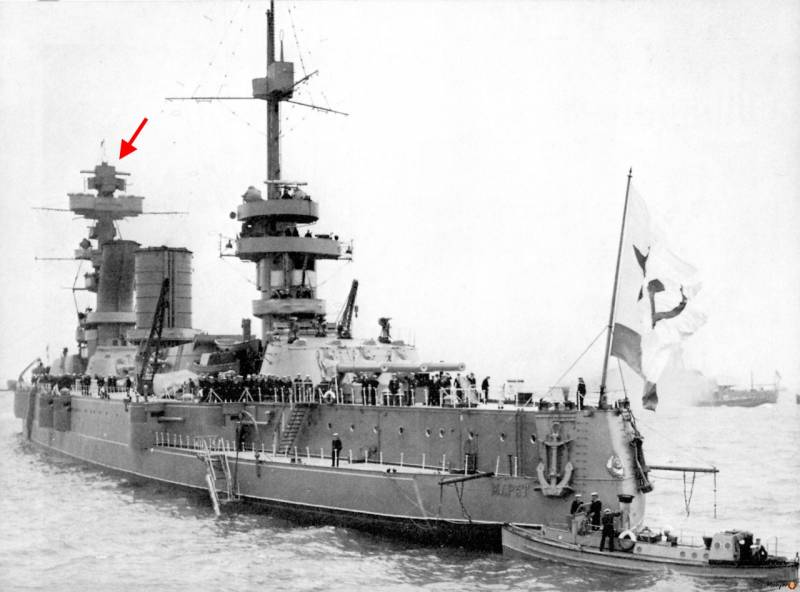
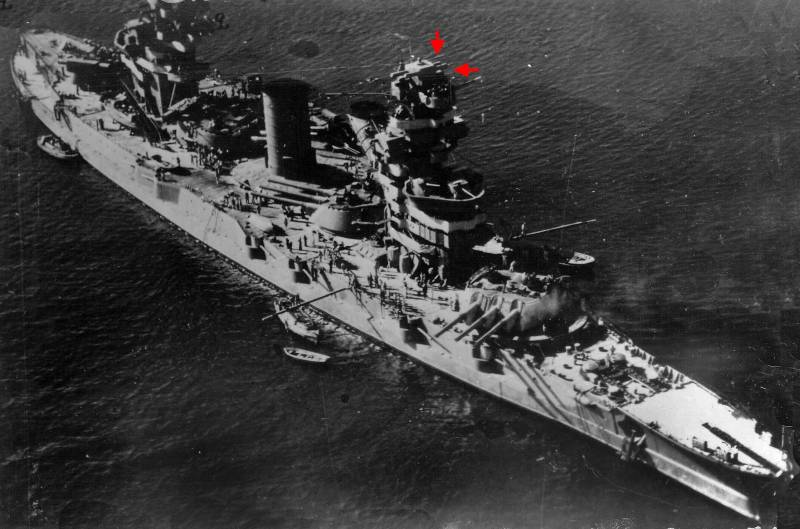
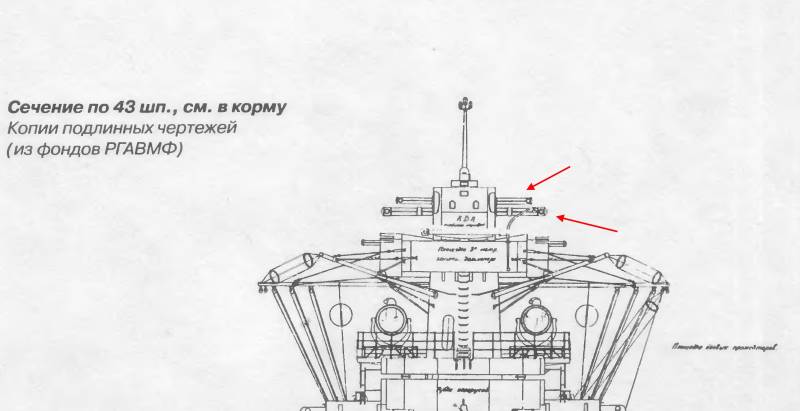
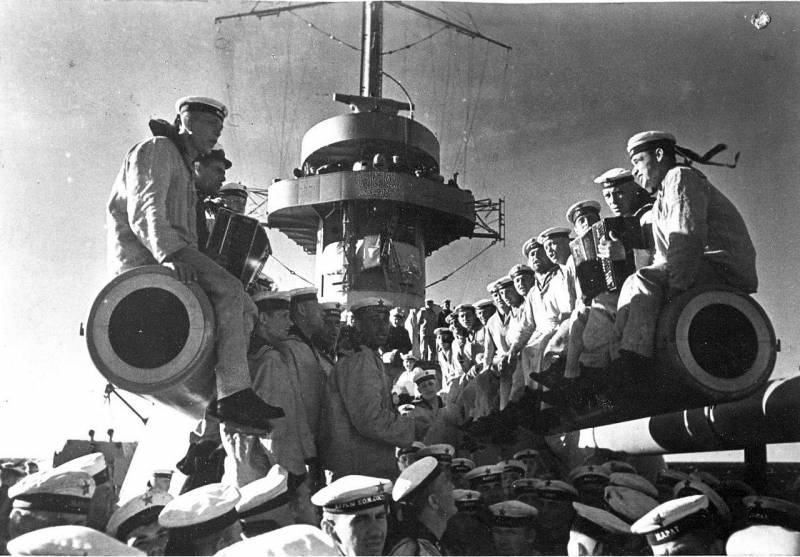
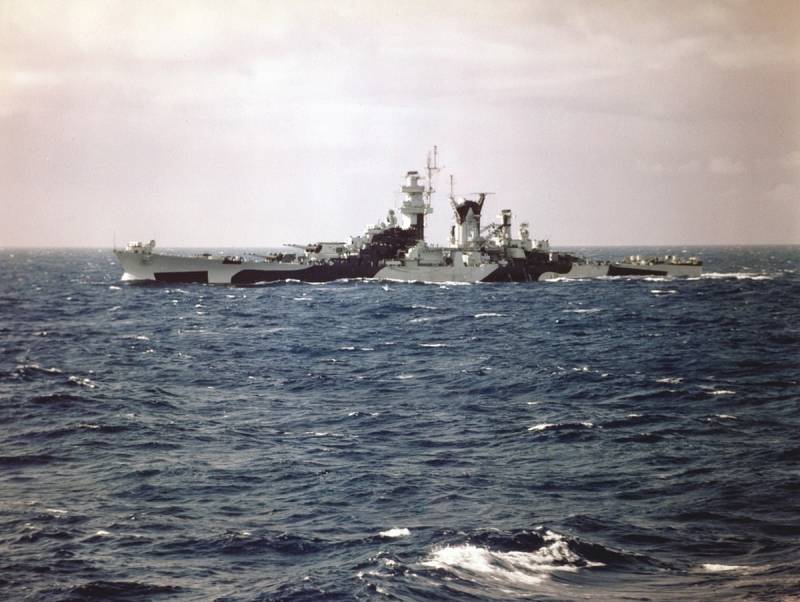
Information